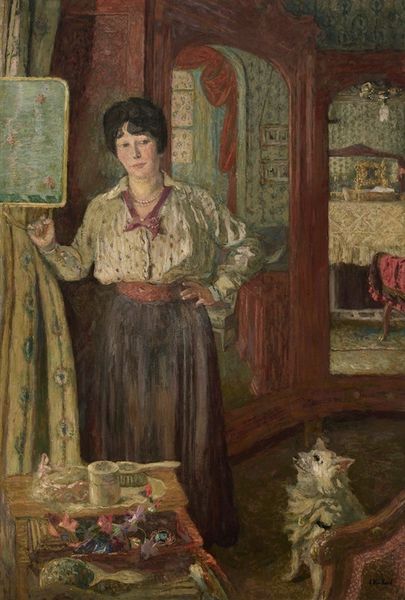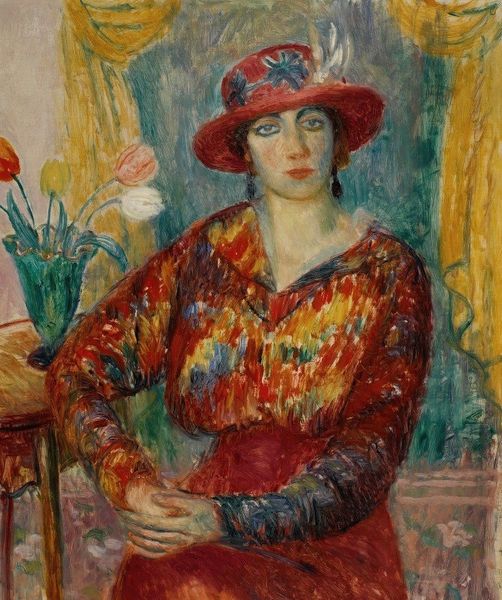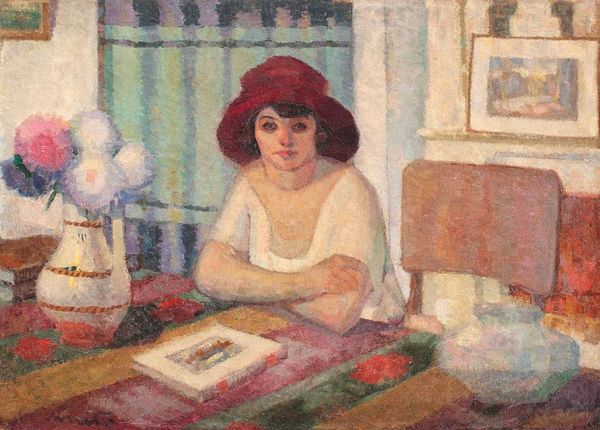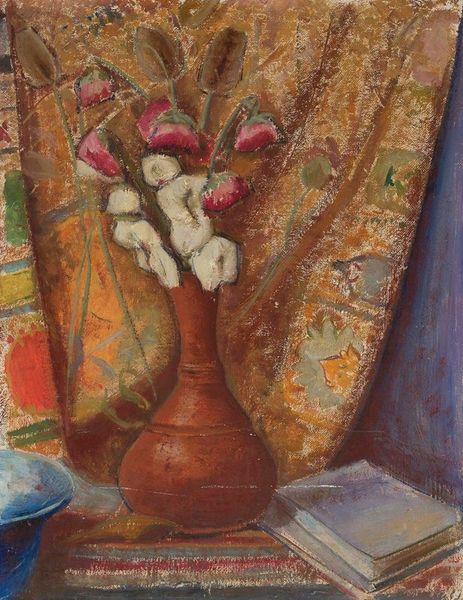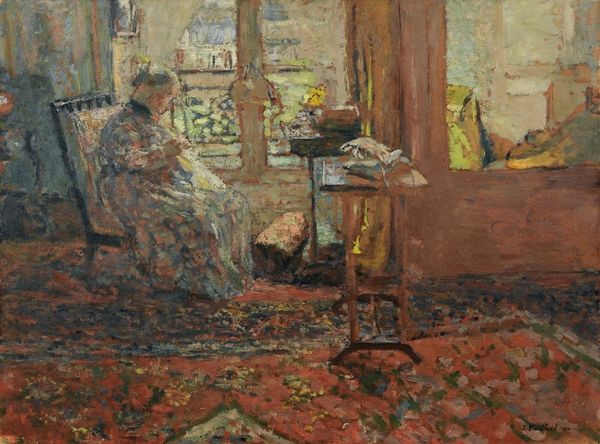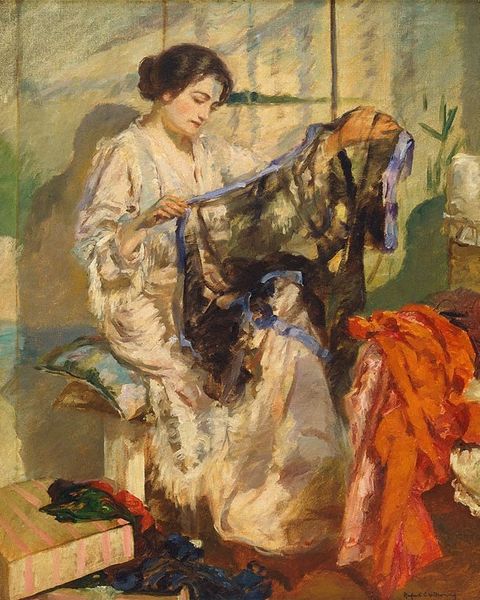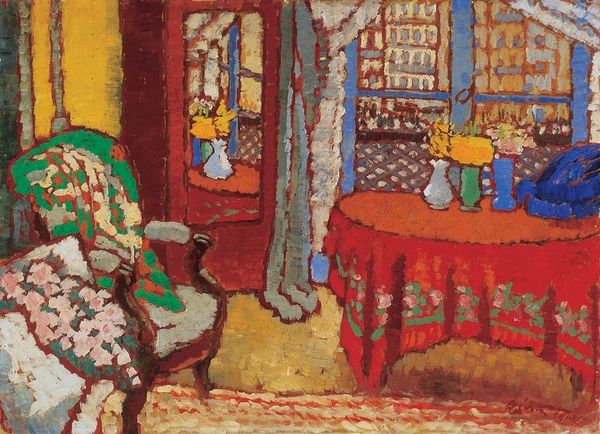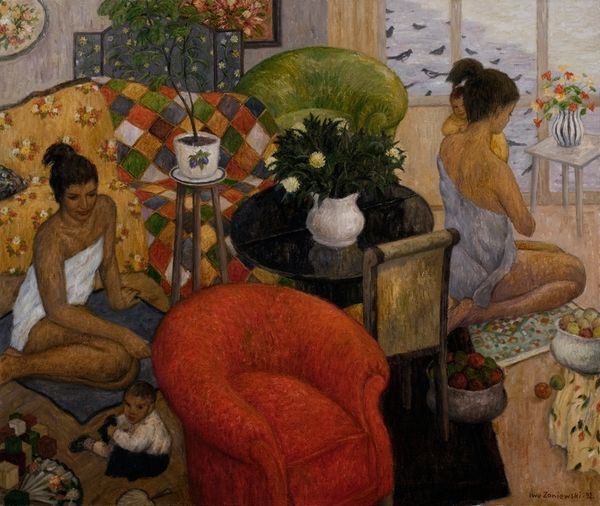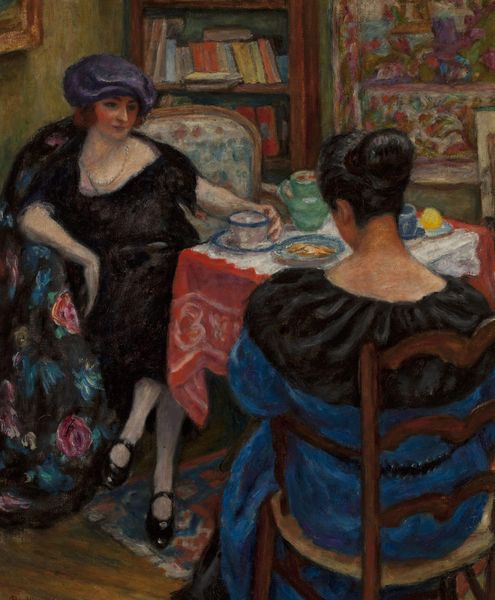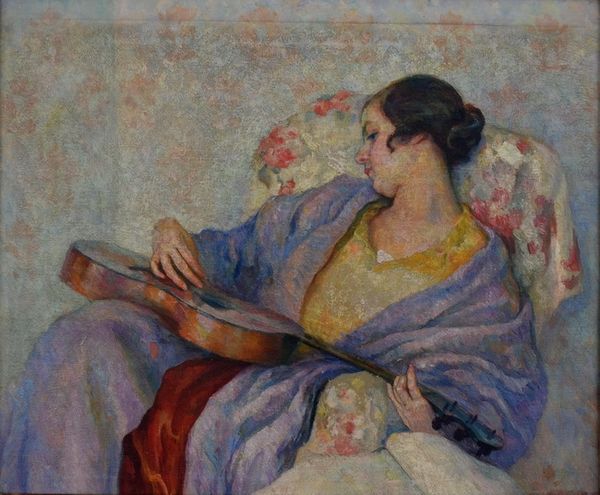
Copyright: Public Domain: Artvee
Editor: Here we have Édouard Vuillard's "Madame Reine Bénard," painted between 1919 and 1920, using oil paint. The tones are so warm and the composition is incredibly dense. It feels very intimate, like we're intruding on a private moment. What catches your eye about this piece? Curator: The spatial compression is quite striking. Note how Vuillard collapses the foreground and background through a flattening of perspective and a sophisticated manipulation of pattern. Editor: I see what you mean. The patterned screen, her dress, and the wallpaper almost merge together. Is there a reason for this focus on surface? Curator: Consider the formal interplay between the figure and her environment. Observe the repetition of shapes and colors. Her dress echoes the reds and pinks of the screen. The multiplication of rectangles mimics the many frames within the work itself. It directs the gaze away from a narrative reading towards the pure visual experience. How does the texture contribute to this? Editor: Well, the brushstrokes are very visible, creating a tactile quality that unifies all the elements. So it's more about the relationships between forms than portraying "Madame Bénard" as an individual? Curator: Precisely. The subject functions more as a compositional element. Vuillard seems less concerned with representing a likeness than with exploring pictorial space and the expressive potential of color and texture. He emphasizes the abstract qualities inherent in representation. Editor: That makes a lot of sense. I was so focused on the figure that I missed how Vuillard prioritized form and surface texture. Curator: These paintings challenge traditional notions of portraiture and perspective. Editor: I will certainly look at intimist paintings differently now. Focusing on those elements of the surface, instead of only subject, reveals much more.
Comments
No comments
Be the first to comment and join the conversation on the ultimate creative platform.
